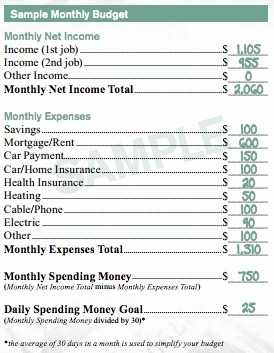According to McDonald's, It Would Take 796 Years For an Employee To Save A Million Dollars

Amidst all the controversy surrounding McDonald’s recently, I almost felt sorry for CEO Don Thompson. Until I realized that he makes $8.7 million per year.
The heavy criticism started in mid-July when McDonald’s offered a budgeting website to teach restaurant employees about financial management. The intent was well-meaning, but it inadvertently proved how difficult it is for workers to live on minimum wage.
Why is this fiasco important for all marketers to think about?
Because every brand has things that they are not necessarily trying to hide, but probably shouldn’t broadcast.
For example, 80% of the ingredients used in US personal care products haven’t been evaluated by the FDA, and some are even banned in Europe. In the electronics industry, companies employ factories crammed with thousands of workers frantically assembling plastic parts to make cell phones.
Are these situations common in their respective industries? Yes. Are they images that CoverGirl or Motorola want to voluntarily publicize? Probably not.
Brands must be strategic about the information they go out of their way to highlight — especially when news can spread virally online.
We can assume that the McDonald’s corporate headquarters is scrambling to figure out how to smooth this over. In the meantime, here are lessons we can learn from what they did wrong.

***
1. If you use an out-of-the-box template from a partner website, make sure that it’s actually relevant for your audience.
McDonald’s budgeting website wasn’t created from scratch. It’s a template from their partnership with Visa’s Practical Money Skills For Life, which has offered financial literacy resources to dozens of organizations and state governments for over 15 years.
As such, some information on the site is totally irrelevant for the target audience.
For example, there’s a calculator that tells you how long it would take to save a million dollars. You simply fill in some basic information about your age, current savings, etc.
According to the calculator, it would take a McDonald’s restaurant employee almost 800 years to reach that goal. Ouch.
Note: The inputs for the calculator were results from an online search for the average minimum wage worker: 0.01% APY interest rate for an average savings account, $5,923 as the national average savings account balance, $50,054 as the national median household income in 2011. The median age for today’s fast-food worker is 29 and the McDonald’s budgeting sheet estimated a $100 per month savings deposit.

The website also helps you calculate your bonus after taxes. Do you really want to remind minimum wage employees that they don’t get bonuses?
To be fair, some of the calculators are useful, and cover topics such as credit card debt, back-to-school budgets, and auto loan payments.
Even if the website is a template, it’s important to customize the content as much as possible to avoid exacerbating a sore topic. Workers don’t need yet another reason to feel bitter about how little money they make — especially if McDonald’s doesn’t plan on raising the minimum wage anytime soon.
2. Explain where you got your numbers.
Providing a detailed breakdown of a budget offers transparency, but it also means that people can easily disagree with what you included (or excluded). And when people mistrust a brand as much as they do McDonald’s, it’s inevitable that they question those decisions.
The majority of complaints about the sample budget stemmed from line items that people felt were unrealistic: health care at $20 a month, heating at $0, and rent at $600.
A group that organizes fast food strikes made a video that said, “$600 will get me, like, nine days in a New York City apartment.”
Indeed, New York City is one of the most expensive US cities to live in. McDonald’s probably wasn’t using it as an average for their sample budget.
But how did they come up with a $600 rent estimate? We don’t know, because McDonald’s didn’t say. According to the United States Census Bureau, the median asking rent in the US was $717 per month in 2012. Other estimates vary, putting the number higher or lower.
McDonald’s needs to explicitly state their assumptions. The risk of not doing so is that readers won’t know if the figures are grounded in truth — or completely made up.
3. Reinforce the generic nature of your marketing material.
A McDonald’s spokesperson wrote in an email to the left-leaning organization ThinkProgress:
“The samples that are on this site are generic examples and are intended to help provide a general outline of what an individual budget may look like.”
That’s a useful caveat, but it was too little too late.
This caveat should have been clearly posted on the website from the beginning. Providing context isn’t a foolproof guarantee against backlash. But it does help set expectations about the purpose of an initiative and show that you were intentional — not careless — about the scope of what’s included.
4. Proactively address criticisms with positive data points.
In an interview with Bloomberg TVafter the incident, CEO Don Thompson reiterated thatMcDonald’s “stands for opportunity.” According to him, 40% of executives at McDonald’s started as hourly employees.
I’m trying to imagine a pimply-faced fry cook working hard to get a rare management position at a restaurant, then somehow making the jump to a desk job in the McDonald’s headquarters, and eventually becoming a senior vice president.
But, let’s give Thompson the benefit of the doubt that this statistic is accurate. If so, promoting from within a company is something to be proud of.
McDonald’s should share the statistic more widely on the budgeting website and link to resources about how to advance within the company.
It frames the idea of minimum wage as temporary. That’s powerful because it shows that an unexpectedly high percentage of McDonald’s executives began their careers with an hourly wage, but eventually moved up. It asserts that even though it’s hard to live on minimum wage, it’s simply a starting point.
The question, though, is whether individuals are actually getting promoted, or continuing to live on minimum wage year after year.
***
For a global multinational brand, it’s hard to predict what will work and what won’t. McDonald’s will always have a target on its back simply because they’re a ubiquitous global company and the face of the fast food industry.
Is it fair? Not necessarily. But it’s even more reason to have a thorough understanding of your brand’s weaknesses, risks, and sensitivities.
You should know what people are ready to pounce on you about, and how to either avoid the topic or be smart about how you address it. This could mean being overly-cautious with including caveats, disclaimers, and thoughtful positioning.
One last note: anything outward-facing should be considered marketing. This sample budget wasn’t publicly promoted to the outside world – it was simply a reference for internal use. But when you are as large as McDonald’s, you should be prepared for any memo – even if it’s just for employees – to attract media attention. If you are aware of sensitive topics, such as minimum wage, you can prevent misunderstandings and avoid giving ammunition to your critics.